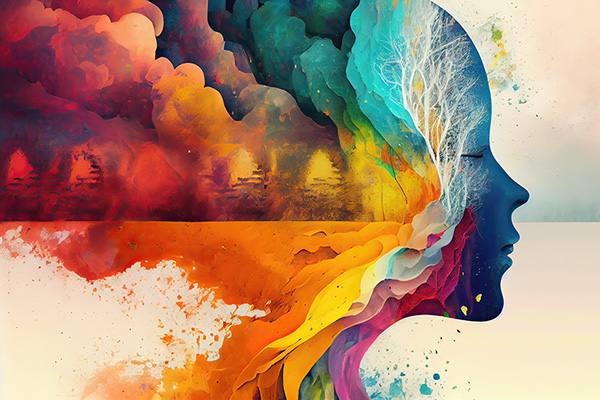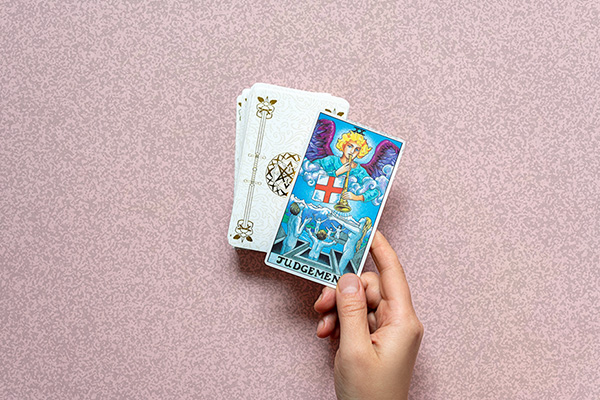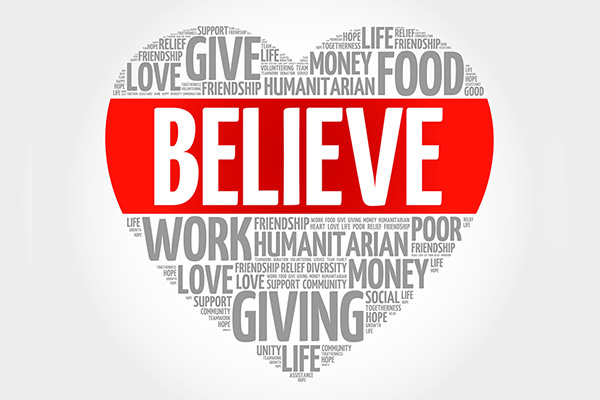christianity
Navigating Loneliness During the Holidays
 The holiday season is traditionally portrayed as a time of togetherness, love, joy, and belonging. We are inundated with media images of families gathered around a festive table, friends celebrating, and communities coming together.
The holiday season is traditionally portrayed as a time of togetherness, love, joy, and belonging. We are inundated with media images of families gathered around a festive table, friends celebrating, and communities coming together.
Paradoxically, for many people, this time of year is instead filled with feelings of loneliness, isolation and disconnection.
The root cause is the societal stereotype and cultural assumption that everyone should be joyful, happy, and surrounded by loved ones during the holidays. If you’re not, for whatever reason, it can lead to feelings of inadequacy, isolation, and social failure.
Holiday loneliness is exacerbated by the stark contrast between our actual circumstances and the commercially driven, idealized versions of holiday gatherings and celebrations we see in advertisements, television shows, movies, and social media. This increases feelings of disconnection, low self-esteem, and even depression.
Loneliness during the holidays can have a significant impact on mental health. Feelings of isolation and disconnection during this time of year can exacerbate existing mental health issues and lead to the development of new ones. The constant reminders of togetherness and joy, combined with a lack of social connections and meaningful interactions, can increase feelings of loneliness, leading to emotional distress, feelings of emptiness and hopelessness, and a decline in overall well-being.
The Spiritual Symbolism Of The Circle
 The circle has a profound and universal meaning in spirituality across cultures and belief systems. It symbolizes a variety of spiritual concepts and offers insights into the interconnectedness of life, the cyclical nature of existence, and the infinite potential for growth and transformation.
The circle has a profound and universal meaning in spirituality across cultures and belief systems. It symbolizes a variety of spiritual concepts and offers insights into the interconnectedness of life, the cyclical nature of existence, and the infinite potential for growth and transformation.
The circle represents unity and oneness. It is a symbol of completeness because it has neither beginning nor end. This circular continuity reflects the eternal nature of the soul and the interconnectedness of all living beings.
In Native American spirituality, for example, the medicine wheel represents balance and harmony between all aspects of life, including the physical, emotional, mental, and spiritual. Similarly, in Hinduism, the concept of samsara refers to the continuous cycle of birth, death and rebirth, with the circle symbolizing the eternal journey of the soul.
In Christianity the circle represents eternity and sacred union. It is referenced in the Bible as the shape of heaven, and as the beginning and ending of time. For Christian couples, the unending circle of a wedding ring is also the symbolic expression of their sacred, eternal union.
The Modern Practice Of Spiritual Healing
 In a world driven by science and technology, the value of our spiritual health is rarely recognized or appreciated these days, yet it is an essential aspect of our holistic health and well-being.
In a world driven by science and technology, the value of our spiritual health is rarely recognized or appreciated these days, yet it is an essential aspect of our holistic health and well-being.
The truth is that spiritual healing has been practiced since the beginning of time to promote physical, emotional, mental and spiritual well-being. Our ancestors were much wiser in this regard. They had a holistic view of health and wellness that not only focused on the physical and mental, but also honored the spiritual or metaphysical aspects of our existence.
In ancient Egypt, for example, illness was treated as a battle between good and evil, and magical remedies were used in addition to herbal medicines. In ancient Greece, holism underpinned everything, and the soul, mind, and body were considered one.
In Traditional Chinese Medicine, a holistic system practiced for at least 23 centuries, healing is achieved by balancing the yin-yang life force energies that permeate everything in the universe. In the indigenous healing traditions of Native America, holistic health is represented by the four quadrants of the ‘medicine wheel’ or ‘sacred circle,’ namely the physical, emotional, mental, and spiritual states of being.
In Christianity, spiritual healing is documented with many references to the healing power of faith and prayer. The Bible also refers to the spiritual gift of healing, and there are several accounts of Jesus performing miraculous healings. In Hinduism, Ayurveda is a five-thousand-year-old Vedic system of medicine that seeks to restore the balance between the body, mind, and spirit.
Follow Your Passion And Truth
 In Native American tradition, human existence and well-being is based on the Medicine Wheel, also known as the Sacred Hoop, that consists of the Four Directions, Father Sky, Mother Earth, and the Spirit Tree. Together these ‘spokes’ of the wheel honor all aspects of human existence, growth, balance, and well-being: physical, emotional, mental, and spiritual.
In Native American tradition, human existence and well-being is based on the Medicine Wheel, also known as the Sacred Hoop, that consists of the Four Directions, Father Sky, Mother Earth, and the Spirit Tree. Together these ‘spokes’ of the wheel honor all aspects of human existence, growth, balance, and well-being: physical, emotional, mental, and spiritual.
In each lifetime, we are destined to achieve progress in one or more of these areas until, finally, after many incarnations, all the ‘spokes’ of our wheel are complete – all the way from the inner hub to the outer rim. At that point, we have completed our various missions through many incarnations in a myriad of schoolrooms, and we finally achieve ascended mastery.
When all our spokes are complete, we leave this dense, earthly dimension and arrive at the highest plane of existence, the realm of the Great Spirit, traditionally known as the ‘Hunting Grounds of the Ancestors,’ and since the arrival of Christianity, as ‘Heaven.’
In this state we never need to descend again, and will remain infinitely in the higher dimension. We are liberated from the endless cycle of rebirth and reach a new level of consciousness and enlightened existence, known as nirvana in Buddhism, moksha in Hindusim, and eternal life in Christianity.
As a result, from a spiritual stand-point, we are offered a smorgasbord of options and choices that we may need for our particular journey in this lifetime. The enthusiasm and passion we feel when we are guided to a particular path is spirit directing us toward the ‘curriculum’ we need to complete in order to achieve our ultimate goal of transcendence in one or more spokes of our wheel.
The True Meaning Of Judgment
 Judgment is card 20 in the Tarot’s Major Arcana. Arcana means “hidden things, mysteries,” from the Latin arcanum meaning “a secret, a mystery” and arcanus meaning “secret, hidden, private, concealed.” Arcana are therefore “pieces of mysterious knowledge or information.”
Judgment is card 20 in the Tarot’s Major Arcana. Arcana means “hidden things, mysteries,” from the Latin arcanum meaning “a secret, a mystery” and arcanus meaning “secret, hidden, private, concealed.” Arcana are therefore “pieces of mysterious knowledge or information.”
In a standard Tarot deck, there are 21 Major Arcana cards. They define The Fool’s journey (the first card) through life and all of the life lessons we encounter along the way. As one of the final stages in The Fool’s journey, the Judgment card represents having learned sufficient lessons to now awaken from the illusion and limited perceptions.
The most well-known tarot deck is the Rider–Waite. Pamela Coleman Smith, aka “Pixie,” was a British artist who illustrated the deck. She deserves much credit for the brilliant way she captured advanced spiritual concepts in the deck’s artwork.
The Rider–Waite Judgment card depicts three resurrected figures, a woman, man, and child, reaching up to an Archangel overhead blowing a trumpet as a wake-up call. The scene is based on Christian imagery representing the Resurrection and Last Judgment. The flag of St. George hangs from the trumpet, which references 1 Corinthians 15 in The Bible.
The Judgment card reminds us that no matter what our background may be, we can rise up and transcend any trauma or adversity in life, regardless how challenging the situation. We also have the power to see through the illusion of life and wake up to the truth.
Gratitude Is The Essential Spiritual Practice
 In a fast-paced world with many distractions and challenges, it is easy to overlook gratitude’s transformative power. Cultivating a mindset of appreciation by acknowledging all the good in our life greatly enhances our well-being and quality of life.
In a fast-paced world with many distractions and challenges, it is easy to overlook gratitude’s transformative power. Cultivating a mindset of appreciation by acknowledging all the good in our life greatly enhances our well-being and quality of life.
Gratitude is advocated in many cultures, religious teachings, and spiritual traditions. It is generally considered the mother of all virtues and the essential spiritual practice. In Judaism, for example, gratitude is considered an essential part of worship. Islam encourages believers to be grateful and express thanks to Allah in all circumstances. Christians are encouraged to praise and give gratitude to God not just in thought and feeling, but also in deeds and action.
Gratitude is also a virtue that Hindus believe should be cultivated in order to live a fulfilling life of inner peace and contentment. Many Buddhist monks begin each day with a chant of gratitude for the blessings in their life. In fact, in Shin Buddhism, gratitude is seen as a primary practice that has priority over meditation and study.
In modern times, scientific research has shed further light on the profound benefits of having an ‘attitude of gratitude.’
While traditionally confined to the realm of philosophy, gratitude has garnered much attention in the field of positive psychology in recent years. Neuroscientists have also begun exploring gratitude from a scientific perspective, seeking to unravel the intricate workings of the brain when we practice and experience gratitude.
To Lie, To Live, To Believe
 Our brains are naturally wired to recognize patterns, find connections between seemingly unrelated things, and draw analytical conclusions from our observations. We all use this ability every day without even knowing it.
Our brains are naturally wired to recognize patterns, find connections between seemingly unrelated things, and draw analytical conclusions from our observations. We all use this ability every day without even knowing it.
It is a talent we inherited from our ancient ancestors. Professor Robert C. Barkman explains that “pattern recognition was key to the survival of our Neanderthal ancestors, allowing them to identify poisonous plants, distinguish predator from prey, and interpret celestial events. Today, pattern recognition plays new, but just as important roles in diagnosing diseases, inspiring new ways to safeguard data, and discovering new planets.”
This amazing ability is however seldom mentioned or considered in spiritual and metaphysical circles. But Spirit has over the years guided me towards greater spiritual insight and metaphysical understanding by taking me on interesting journeys of analysis and pattern recognition towards profound insights and relevations.
For example, while meditating during Easter a few weeks ago, my guides took me ‘down a rabbit hole’ on the decisive word believe. The first insight I discovered was that right in the middle of the word ‘believe’ there hides another, more disheartening little word: lie.
Of course, ‘believe’ is a good word. It is the cornerstone to faith and living a spiritually empowered life. But the hidden word ‘lie’ inside it reminds us that we must also have a living faith for it to be authentic and powerful. And, if you drop the letter ‘v’ into ‘lie,’ it becomes the word ‘live.’